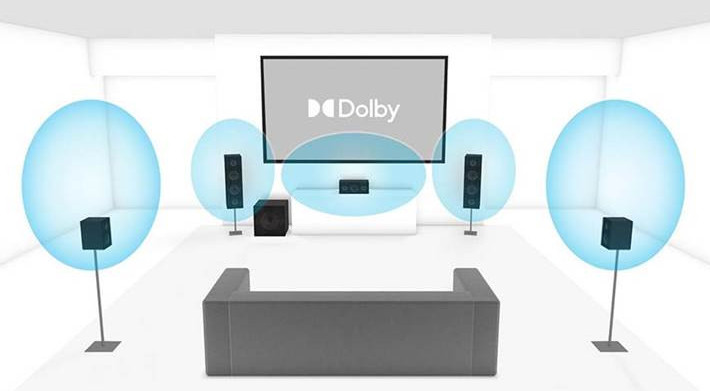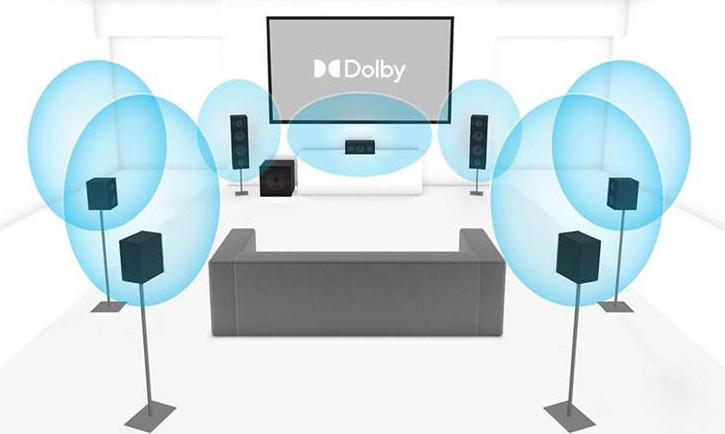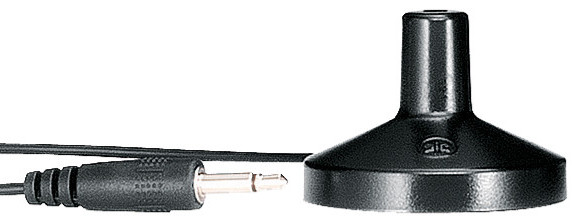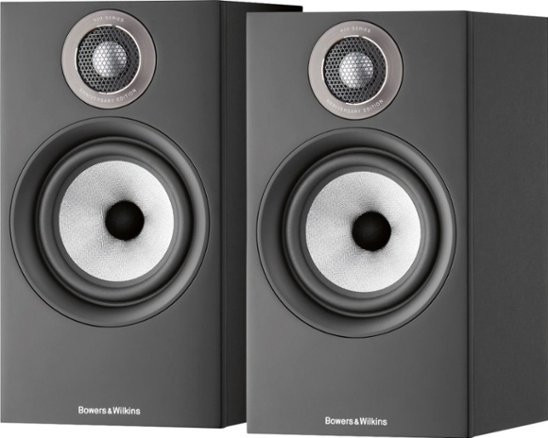
Introduction
Creating a home theater setup with the right speakers and the best speaker placement is essential for an epic audio experience. Whether you’re a movie enthusiast or a music lover, having the right speakers can make all the difference in the quality of sound you hear. In this article, we will explore the various aspects of creating a home theater setup, including choosing the right speakers, understanding speaker placement, exploring different types of speakers, setting up surround sound, utilizing subwoofers, calibrating speakers, considering wireless options, implementing acoustic treatment, and integrating smart speakers for voice control. By carefully considering these factors, you can create a home theater experience that rivals that of a commercial cinema.
Choosing the Right Speakers for Your Home Theater Setup
When it comes to choosing speakers for your home theater setup, it’s important to consider factors such as room size and personal preferences. The size of your room will determine the type and size of speakers that will work best. For smaller rooms, bookshelf speakers or in-wall speakers may be more suitable, while larger rooms may benefit from floor-standing speakers. Additionally, personal preferences play a role in selecting speakers that produce the desired sound signature.
Floor-standing speakers are large and powerful speakers that are designed to stand on the floor. They typically have multiple drivers and provide a full range of sound. Bookshelf speakers are smaller and can be placed on shelves or stands. They are more compact but still offer excellent sound quality. In-wall speakers are installed directly into the walls and provide a clean and unobtrusive look.
When evaluating speaker specifications and reviews, it’s important to consider factors such as frequency response, sensitivity, power handling, and impedance. Frequency response indicates the range of frequencies that the speaker can reproduce. Sensitivity measures how efficiently the speaker converts power into sound. Power handling refers to the maximum power that the speaker can handle without distortion. Impedance is the electrical resistance of the speaker. It’s also helpful to read reviews from reputable sources or listen to speakers in person to get a sense of their sound quality.
Understanding the Importance of Speaker Placement in Creating an Epic Home Theater Experience

The best placement of surround sound speakers is crucial for your overall surround experience. The placement of speakers affects sound quality, immersion, and the overall experience. Each speaker in a home theater setup has a specific role, and proper placement ensures that the sound is balanced and accurately reproduced.
The front speakers, which include the left and right speakers, are responsible for delivering the majority of the audio content. They should be placed at ear level and equidistant from the primary listening position. The center speaker, which handles dialogue and other center-channel audio, should be placed above or below the display screen and aimed towards the primary listening position.
Surround speakers are responsible for creating a sense of immersion and envelopment. They should be placed to the sides or slightly behind the primary listening position at ear level. Height speakers, used in Dolby Atmos setups, should be placed above the listener to create a three-dimensional sound experience.
Optimizing speaker placement in different room layouts can be challenging. In rectangular rooms, it’s best to place the front speakers along the shorter walls for better sound dispersion. In square rooms, placing the front speakers along one of the walls can help create a wider soundstage. It’s also important to consider factors such as room acoustics, furniture placement, and potential obstacles that may affect sound quality.
Exploring Different Types of Speakers for a Truly Immersive Audio Experience
There are various types of speakers available on the market, each with its own benefits and drawbacks. Traditional cone drivers are the most common type of speaker driver and offer a good balance between cost, size, and performance. They are capable of producing accurate and dynamic sound.
Electrostatic speakers use a thin diaphragm that is driven by an electrostatic field. They are known for their transparency and detail, but they can be large and require a dedicated amplifier. Planar magnetic speakers use a thin diaphragm with a conductive coil that interacts with a magnetic field. They offer excellent detail and accuracy, but they can also be large and require a powerful amplifier.
Timbre matching is an important concept in home theater setups. It refers to using speakers from the same brand or series to ensure consistent sound quality and tonal balance. Mixing different brands or series of speakers can result in a mismatched sound, which can be distracting and affect the overall experience.
Tips for Setting Up Surround Sound Speakers to Maximize Audio Quality
Surround sound is an essential component of a home theater setup, as it creates a more immersive audio experience. There are different surround sound formats, such as 5.1, 7.1, and Dolby Atmos, each offering a different level of immersion.
In a 5.1 setup, there are five main speakers (front left, front right, center, surround left, surround right) and one subwoofer. In a 7.1 setup, there are two additional surround back speakers. Dolby Atmos adds height speakers to create a three-dimensional sound experience.
When positioning surround speakers, it’s important to consider their angle and distance from the listener. Surround speakers should be placed slightly behind the primary listening position and angled towards the listener for optimal sound dispersion. The distance between the listener and the surround speakers should be equal to or slightly greater than the distance between the listener and the front speakers.
Calibrating speaker levels and distances is crucial for achieving balanced sound in a surround sound setup. Most AV receivers have built-in calibration tools that can automatically adjust speaker levels and distances based on room acoustics. It’s important to follow the instructions provided by the receiver manufacturer to ensure accurate calibration.
The Role of Subwoofers in Enhancing Bass and Adding Depth to Your Home Theater
Subwoofers play a crucial role in a home theater setup by reproducing low-frequency sounds, such as explosions and deep bass notes. They add depth and impact to the audio, creating a more immersive experience. When choosing a subwoofer, it’s important to consider factors such as room size, desired bass response, and personal preferences.
There are different types of subwoofers available, including sealed, ported, and powered subwoofers. Sealed subwoofers are compact and provide tight and accurate bass. Ported subwoofers are larger and offer more output but may sacrifice some accuracy. Powered subwoofers have a built-in amplifier, making them easy to set up and control.
Subwoofer placement is crucial for achieving balanced bass response. Placing the subwoofer in a corner or against a wall can enhance bass output, but it may result in boomy or uneven bass. Experimenting with different placements and using room correction software can help achieve the best possible bass response.
How to Calibrate Your Speakers for Optimal Sound Quality in Your Home Theater
Calibrating your speakers is essential for achieving optimal sound quality in your home theater setup. Speaker calibration involves adjusting speaker levels, distances, and crossover settings to ensure accurate sound reproduction.
Most AV receivers come with built-in calibration tools that use a microphone to measure the acoustic properties of your room. The receiver then adjusts the speaker levels and distances based on these measurements. It’s important to follow the  instructions provided by the receiver manufacturer to ensure accurate calibration.
instructions provided by the receiver manufacturer to ensure accurate calibration.
In addition to speaker levels and distances, crossover settings also play a role in speaker calibration. The crossover setting determines the frequency at which the receiver redirects audio from the main speakers to the subwoofer. It’s important to set the crossover frequency based on the capabilities of your speakers and subwoofer to ensure a smooth transition between frequencies.
Room correction software can also be used to fine-tune the sound in your home theater. These software programs analyze the acoustic properties of your room and make adjustments to compensate for any room-related issues, such as reflections or standing waves. It’s important to follow the instructions provided by the software manufacturer and make adjustments based on your personal preferences.
Exploring Wireless Speaker Options for a Clean and Clutter-Free Home Theater Setup
Wireless speakers offer a clean and flexible solution for a home theater setup. They eliminate the need for long speaker cables, reducing clutter and making it easier to position speakers in the room. There are different wireless technologies available, including Bluetooth, Wi-Fi, and dedicated wireless audio systems.
Bluetooth is a popular wireless technology that allows you to stream audio from your smartphone or tablet to compatible speakers. It offers convenience and flexibility but may have limitations in terms of range and audio quality.
Wi-Fi-based wireless speakers offer better range and audio quality compared to Bluetooth. They connect to your home network and can be controlled using a smartphone app or voice commands. Some Wi-Fi speakers also support multi-room audio, allowing you to play music in different rooms simultaneously.
Dedicated wireless audio systems, such as those based on proprietary technologies like Sonos or HEOS, offer even better range and audio quality. These systems typically consist of a wireless transmitter that connects to your AV receiver and wireless speakers that receive the audio signal. They offer seamless integration with your home theater setup and can be expanded to include multiple rooms.
When setting up wireless speakers, it’s important to consider factors such as signal strength, interference from other devices, and compatibility with your existing equipment. It’s also important to follow the instructions provided by the speaker manufacturer to ensure optimal performance.
Understanding the Difference Between Active and Passive Speakers for Your Home Theater
Active and passive speakers are two different types of speakers that have their own advantages and disadvantages. Active speakers have built-in amplifiers, while passive speakers require an external amplifier or AV receiver to power them.
Active speakers are self-powered and offer convenience and simplicity. They eliminate the need for a separate amplifier or receiver, making them easy to set up and control. Active speakers also have built-in crossovers, which ensure that the different frequency ranges are sent to the appropriate drivers. However, active speakers may be more expensive compared to passive speakers, and they may not offer the same level of customization and flexibility.
Passive speakers require an external amplifier or AV receiver to power them. They offer more flexibility in terms of amplifier selection and customization. Passive speakers also allow for bi-amping or tri-amping, which involves using separate amplifiers for different frequency ranges. However, passive speakers require more components and cables, which can result in a more complex setup.
When choosing between active and passive speakers, it’s important to consider factors such as budget, desired level of customization, and personal preferences. It’s also important to ensure that the amplifier or receiver you choose is compatible with the impedance and power requirements of the speakers.
The Benefits of Acoustic Treatment in Creating a Sound-Optimized Home Theater Space
Acoustic treatment plays a crucial role in creating a sound-optimized home theater space. It helps reduce reflections, echoes, and standing waves, resulting in improved sound quality and clarity. There are different types of acoustic treatment available, including absorbers, diffusers, and bass traps.
Absorbers are designed to absorb sound energy and reduce reflections. They can be placed on walls, ceilings, or corners to minimize echo and reverb. Absorbers come in different thicknesses and densities, each offering different levels of absorption across different frequencies.
Diffusers scatter sound energy in different directions, helping to break up reflections and create a more natural sound. They can be placed on walls or ceilings to create a more spacious and immersive soundstage. Diffusers come in different shapes and designs, each offering different diffusion patterns.
Bass traps are designed to absorb low-frequency sound energy and reduce standing waves. They are typically placed in corners or along walls to target bass frequencies. Bass traps come in different sizes and designs, each offering different levels of absorption across different frequencies.
Implementing acoustic treatment in your home theater space can greatly improve the sound quality and immersion. It’s important to consider factors such as room size, speaker placement, and personal preferences when choosing and implementing acoustic treatment. It’s also helpful to consult with an acoustic professional or do thorough research to ensure that you are using the right type and amount of treatment for your specific room.
Enhancing Your Home Theater Experience with Smart Speaker Integration and Voice Control
Integrating smart speakers, such as Amazon Echo or Google Home, into your home theater setup can enhance your overall experience and simplify the operation of your system. Smart speakers offer voice control capabilities, allowing you to control your home theater system using simple voice commands.
By integrating smart speakers into your home theater setup, you can easily control various aspects of your system, such as volume control, playback control, and input selection. You can also use voice commands to search for movies or music, adjust settings, and even control other smart devices in your home.
To set up smart speakers for seamless integration with your home theater system, you will need to connect them to your AV receiver or other audio devices using Bluetooth or Wi-Fi. You will also need to configure the smart speaker’s settings and enable any necessary skills or integrations.
It’s important to note that not all smart speakers are compatible with all home theater systems. It’s important to check the compatibility of the smart speaker with your specific equipment before making a purchase. Additionally, it’s important to follow the instructions provided by the smart speaker manufacturer to ensure proper setup and configuration.
Conclusion
Creating a home theater setup with the right speakers and speaker placement is essential for an epic audio experience. By carefully considering factors such as room size, speaker type, speaker placement, and calibration, you can create a home theater experience that rivals that of a commercial cinema. Whether you’re a movie enthusiast or a music lover, investing in the right speakers and optimizing their placement and calibration will greatly enhance your overall experience. So take the time to research and choose the right speakers, experiment with different placements, and calibrate your system for optimal sound quality. With the right setup, you can enjoy an immersive and epic audio experience in the comfort of your own home.
Your enthusiasm for Audio Video Adventures is contagious, and I’m excited to have you as part of the community! I look forward to bringing you more exciting content in the future. In the meantime, please don’t hesitate to reach out if you have any further questions or comments. Here at Audio Video Adventures is where you can get all the latest in Projectors, Receivers, Speakers, and accessories as well as everything else you need for the ideal home theater experience.
Your article on the best placement of surround sound speakers and selecting the right speakers is an insightful guide for home theater enthusiasts. It’s evident that you’ve covered essential aspects of creating an exceptional audio experience. Your explanation of the importance of speaker placement in achieving balanced sound and immersion is particularly valuable. Could you elaborate on how room acoustics and furniture arrangements can impact the effectiveness of speaker placement for optimal sound quality?
Room acoustics refers to how sound behaves in an enclosed space. The way sound waves interact with the room’s physical structure and contents can significantly affect what you hear. For instance, hard surfaces like glass or concrete reflect sound waves, while soft materials like carpet or curtains absorb them. This balance between absorption and reflection is crucial for achieving optimal sound quality.
Placing speakers too close to walls or corners can cause bass buildup, leading to a boomy, muddled sound. Conversely, speakers placed too far apart may result in a lack of cohesion between stereo channels. So how do you achieve optimal sound quality? Start by placing your speakers at ear level when seated and position them away from walls and corners. Experiment with different furniture arrangements to find a balance between absorption and reflection that suits your taste.
Please come back to my site again to stay on top of the various topics and remain informed of new innovations as well as the fantastic choices in all things audio video.
Thank you for describing all the relevant factors such as frequency response, sensitivity, power handling, and impedance. Frequency response indicates the range of frequencies that the speaker can reproduce, but you need to be an expert to understand this. Sensitivity measures how efficiently the speaker converts power into sound, and again this is an expert subject. Power handling refers to the maximum power that the speaker can handle without distortion, another expertise I suggest. Impedance is the electrical resistance of the speaker, definitely an area of expertise. I will read other reviews from reputable sources or listen to speakers and gain a better understanding of the whole subject before committing to a big installation that I can not specify in an expert way, to take advantage of the high quality equipment available to me.
Thank you for your insightful review on the placement of surround sound speakers and the importance of choosing the right speaker. Your detailed explanation of key factors such as frequency response, sensitivity, power handling, and impedance is greatly appreciated.
Your suggestion to read other reviews from reputable sources or listen to speakers before committing to a big installation is very wise. It’s always best to gain a comprehensive understanding of these technical aspects before investing in high-quality equipment.
Once again, thank you for your valuable input on this subject. Your review will undoubtedly assist others who are looking into enhancing their audio experience with surround sound speakers. We hope you continue sharing your knowledge and expertise with our community.
At
Audio Video Adventures we offer all the latest in Projectors,
Receivers, Speakers, and accessories as well as everything else you
need for the ideal home theater experience.
Gene
Thanks a lot Gene
I had some trouble adjusting the speakers and volume control. Also, the tips about speaker placement were very useful. You know, I had placed them according to the design of the house and had not paid attention to play sounds, also What said about the different types of speakers was very interesting. Mostly because I’m interested in electrical devices but, until now, I didn’t know about parts of speakers.
It’s important to note that while adjusting the volume is relatively straightforward, fine-tuning the speakers can be slightly more complex. This is because optimal speaker adjustment requires an understanding of not just the technical aspects of the audio system but also acoustics. After some experimentation and research, I discovered that speaker placement significantly impacts sound quality. Placing speakers too close to walls or corners can cause sound distortion due to reflections off these surfaces. On the other hand, placing them too far apart can result in a lack of cohesion in the soundstage
Some Yamaha Receivers come with a YPAO microphone which which when placed in the central listening location at ear heighth is used to automatically balance each speakers volume level in the room. The microphone can be placed at different locations for an even more balanced sound. Other high end receivers have built in systems that constantly and automatically balance the speakers volume level depending on the what you are listening too, movies, classical, rock, jazz, etc.
At
Audio Video Adventures we offer all the latest in Projectors,
Receivers, Speakers, and accessories as well as everything else you
need for the ideal home theater experience.
Gene